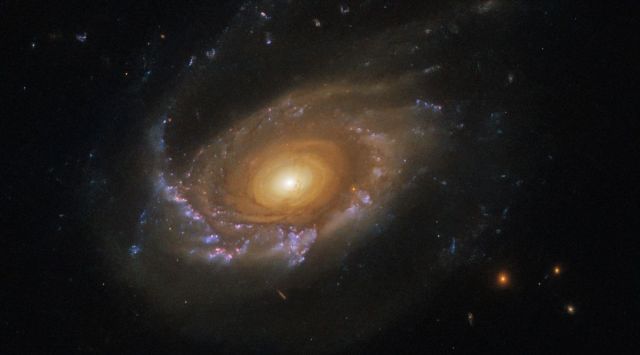Hubble captures a jellyfish galaxy drifting 900 million light-years away
The JW39 is a jellyfish galaxy that is over 900 million light-years away. It looks beautiful, but it is in a brutal environment where it is losing its gas and stars to other galaxies.
 This jellyfish galaxy might appear serene but its environment is anything but. (Image credit: ESA/Hubble & NASA, M. Gullieuszik and the GASP team)
This jellyfish galaxy might appear serene but its environment is anything but. (Image credit: ESA/Hubble & NASA, M. Gullieuszik and the GASP team) In the Hubble Space Telescope image released on Friday, you can see the JW39 jellyfish galaxy drifting around almost serenely. It is over 900 million years away in the constellation Come Berenices.
While JW39 might have a seemingly calm appearance, it is actually situated in what can be described as a bit of a savage environment—a galaxy cluster. Unlike galaxies that are isolated, those that are in clusters can get distorted by the gravitational pull of other larger galaxies in the cluster.
This gravitational pull can distort galaxies into different kinds of shapes. And as if that was not enough, the space between galaxies in a cluster is usually populated by a scorching hot plasma that is called intracluster medium. Galaxies moving through this medium experience something that is similar to what swimmers experience when they swim against a current.
This interaction can strip galaxies of their star-forming gas in a process known as ram-pressure stripping. This process is what creates the trailing “tentacles” that give such galaxies their typical jellyfish appearance. As with other jellyfish galaxies, the pressure of the intracluster medium is also stripping away the gas and dust of JW39 into long trailing ribbons of star formation.
According to NASA, astronomers are using Hubble’s Wide Field Camera 3 to study these tentacles in more detail as they are in quite an extreme environment for star formation. Interestingly, they have so far found that the formation of stars in the tentacles of jellyfish galaxies is not noticeably different from star formation in the galaxy disk.







